
Off the Beaten Path: The Milan Insider’s Guide
Just in time for the 60th annual Salone del Mobile Milano, seven in-the-know experts from the world of fashion, design, and architecture share their favorite spots in the city“We looked at the people, and the great galleria in the dusk, and each other.”
—Ernest Hemingway, 1918
This is where design can bring you in Milan. Yes, to the Galleria, officially the Galleria Vittorio Emanuele II, a shopping gallery in the center of Milano. But what Hemingway was getting at—as a young ambulance driver in WWI, recovering in Milan for six months—was how, like no other place, Milan uses design, both ancient and modern, to reconcile the past and present. To bring people, commerce, lovers, and strangers together—in awe, revelry, and romance.
Both foreigners and locals alike will have an opportunity to delight in that design this summer, as the Milan Furniture Fair, or Salone del Mobile Milano, makes its triumphant return in 2022 for its 60th year. With an average annual attendance of 370 thousand, Salone is a city-wide exhibition featuring categories reflecting classic craftsmanship, functionality, and innovation, as well as luxury. Museums, piazzas, and palazzos are taken over by designers, brands, and showrooms as the city itself becomes a showcase of the world’s finest, most thoughtful, and most forward-looking furnishings.
From June 7–12, there will be no shortage of exhibitions to explore. But the city that hosts them is not to be forgotten. Milan is an architectural wonderland, blending the classical and modern in a dance of timeless, articulated beauty.
Just in time for Salone, we asked seven stylish design experts—from the editor-in-chief of Galerie magazine to the design and interiors director of T: The New York Times Style Magazine—to take us to the Milan that cannot be missed. From those that know best, a little architectural passeggiare.
1
Villa Necchi
“The family behind Villa Necchi were the Singers of Italy,” says architect Brian Sawyer, referring to sisters Gigina and Nedda Necchi, as well as the former’s husband, Angelo Campiglio. The industrialists built the home between 1932 and 1935 and occupied it until it was given to the state in 2000 (it opened to the public as a museum in 2008). “It’s the apotheosis of Italian Moderne,” says Sawyer. “It’s probably one of the most interesting examples of a classic Italian villa but in a modern execution.” Film fans might recognize the clean lines, supple rosewood paneling, and endless marble bathrooms from Luca Guadagnino’s 2009 movie I Am Love. But for design heads, it’s about the achievement of architect Piero Portaluppi, whose rationalist vision resulted in its perfected execution. “It’s all based on traditional, classic proportion and scale,” says Sawyer. “But it takes materiality to a different place. You get whole terrazzo floors in the bathroom—amazing uses of marble for tubs.” The rationalist style emerged in the 1920s, under Mussolini, and was quite staid by definition. “But in the hands of the right person, it becomes exquisite,” says Sawyer. “It remains a capsule of the very best of Italian design from that period, all in one place: architecture, interiors, garden. It has it all.”
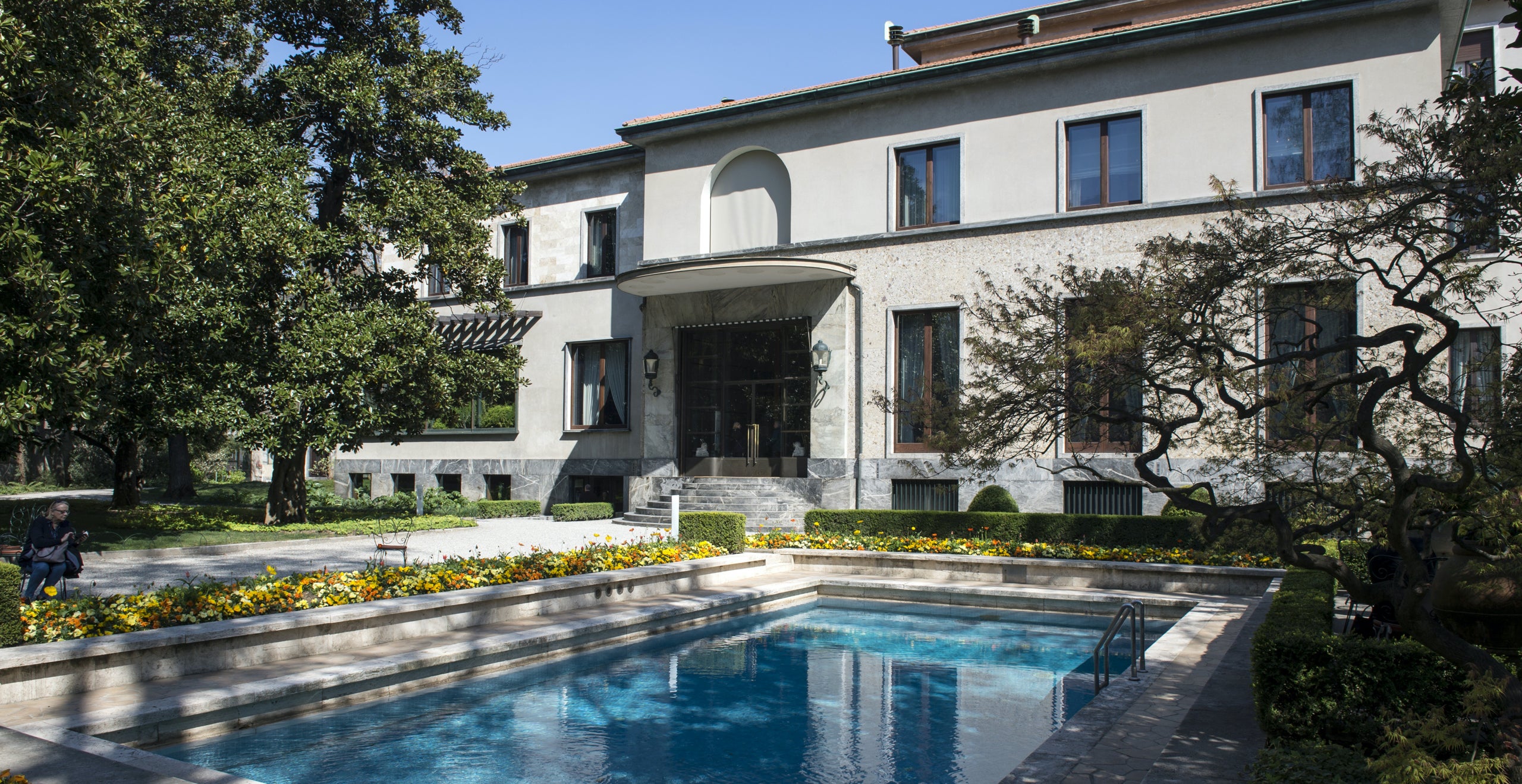
2
Ristorante Cracco
After being redesigned by Studio Peregalli in 2018, the landmark Michelin-starred restaurant from chef Carlo Cracco is the absolute height of food and design. Located in the Galleria (see below), Cracco is set up over five floors and is in fact many restaurants in one. “As you go up, it gets fancier,” says Jacqueline Terrebonne, editor-in-chief of Galerie magazine. “It goes from a cafe and wine bar to this fine-dining restaurant up at the top, where you’re overlooking the whole shopping center. And the food is almost as theatrical as the interiors they’ve created for it,” she says. Terrebonne is drawn to the restaurant’s stonework and mirrors but is transfixed by the procession of spaces as you move up the levels. “When you walk in on the top floor, there’s wood paneling and a teal blue color that’s been washed and faded, with these overblown flowers in blues and yellow and pinks. The dining rooms are really gold and mirrored, opulent in a way that’s very Milanese and elegant. It feels like it’s from another time and place,” Terrebonne adds.

3
Museo Bagatti Valsecchi
One way to think of the Museo Bagatti Valsecchi is a Milanese Grey Gardens but with way more history, money, and taste. The traditional home of the Valsecchi family, in the 1880s, brothers Baron Fausto Valsecchi and Baron Giuseppe Bagatti Valsecchi began to fill it with treasures that evoked Italy’s most romantic period. “Basically, at the end of the 19th century, they started making things that looked like they were from the 16th century. And that’s the feeling in there,” says Tom Delavan, the design and interiors director of T: The New York Times Style Magazine. Walking through the museum, you feel like the 15th century paintings are part of a room; the incredibly ornate cassones were there for storage; the four-post beds were slept in. “There’s suits of armor. If you’re into woodworking, the ceiling details and the beds are amazing,” says William Hanley, the editor-in-chief of Dwell. “There’s a basin for a shower that has these carved lizards in it; some of the most decorative elements of art I’ve ever seen,” he says. The best part: it doesn’t feel like a museum. “It’s like walking through someone’s home. You can see that someone really lived there,” says Delavan.
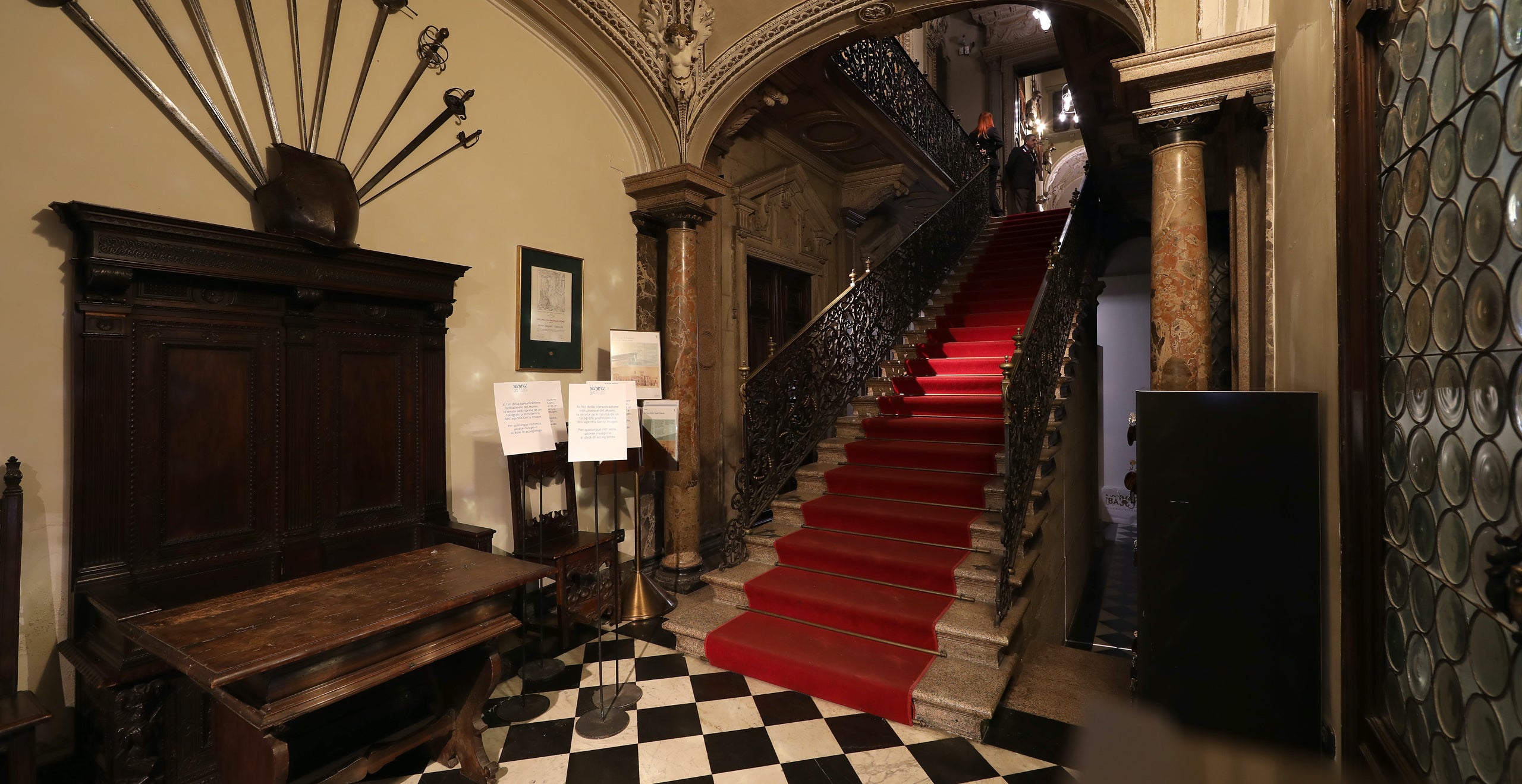
4
Altai
Just north of the city center, in the neighborhood of Porta Garibaldi, you’ll find a cacophony of shoppers, sidewalk cafes, and walking streets like Corso Como (the neighborhood gets its name from the Garibaldi Gate, a quintessentially neoclassical arch). At Via Pinamonte 6, lucky shoppers will come across Altai, a rug shop that is unmatched in both selection and taste. Owned by Raffaele Carrieri and his wife Elisa, the store caters to the most revered tastemakers in Italy: Nino Cerruti, Alberto Aspesi, and the Agnelli family. While you can always find the most unusual and beautiful berbers, felts, kilim, and Saharan mats, Raffaele and Elisa don’t just collect and sell rugs, they work with experts—museum-level historians and anthropologists—to craft exhibits of the rugs they uncover along the world’s oldest trade routes. “Honestly, you see things there that you’ve never seen before,” says Delavan. “They have incredible suzanis and tülüs. And then during Salone, they put on an incredible exhibition. They will tackle a certain kind of rug and find the best examples—they’re museum-quality rugs, and they’ll cover the shop with them.” Think of it as a museum where you have the option of taking home the exhibits—or you can always just browse, which can be just as fun and inspiring.

5
The Torre Velasca
“The Torre Velasca is the alternative d’Uomo. Maybe that’s a bit pretentious. It’s nice,” says Marco Velardi, the publisher and co-founder of Apartamento magazine. The brutalist Velasca Tower was completed in 1958, flexing its mushroom shape as an interpretation of a traditional, medieval, Lombardian castle or fortress. It was the brainchild of a group of Milanese architects called BBPR, who attempted to bridge the past and future with their own take on the most classic of large-scale architectural endeavors. When it was unveiled, the reaction was, in a word, brutal (it was attacked as a withdrawal from modern architecture), and to this day it is often derided. “People are fans. They love to hate it,” says Velardi. Emerging from the downtown core, in direct opposition to the d’Uomo, the mixed-use structure (commercial, residential) is, in a way, giving the finger to all the traditional beautifully domed buildings for which Milan is celebrated. “It pops out. It’s beautiful for its strangeness in the context of Milan,” says Velardi. “The general feeling is that it is of a Milan that is brutal instead of pretty.” In 2011, the Torre Velasca was given protection as a historic building.
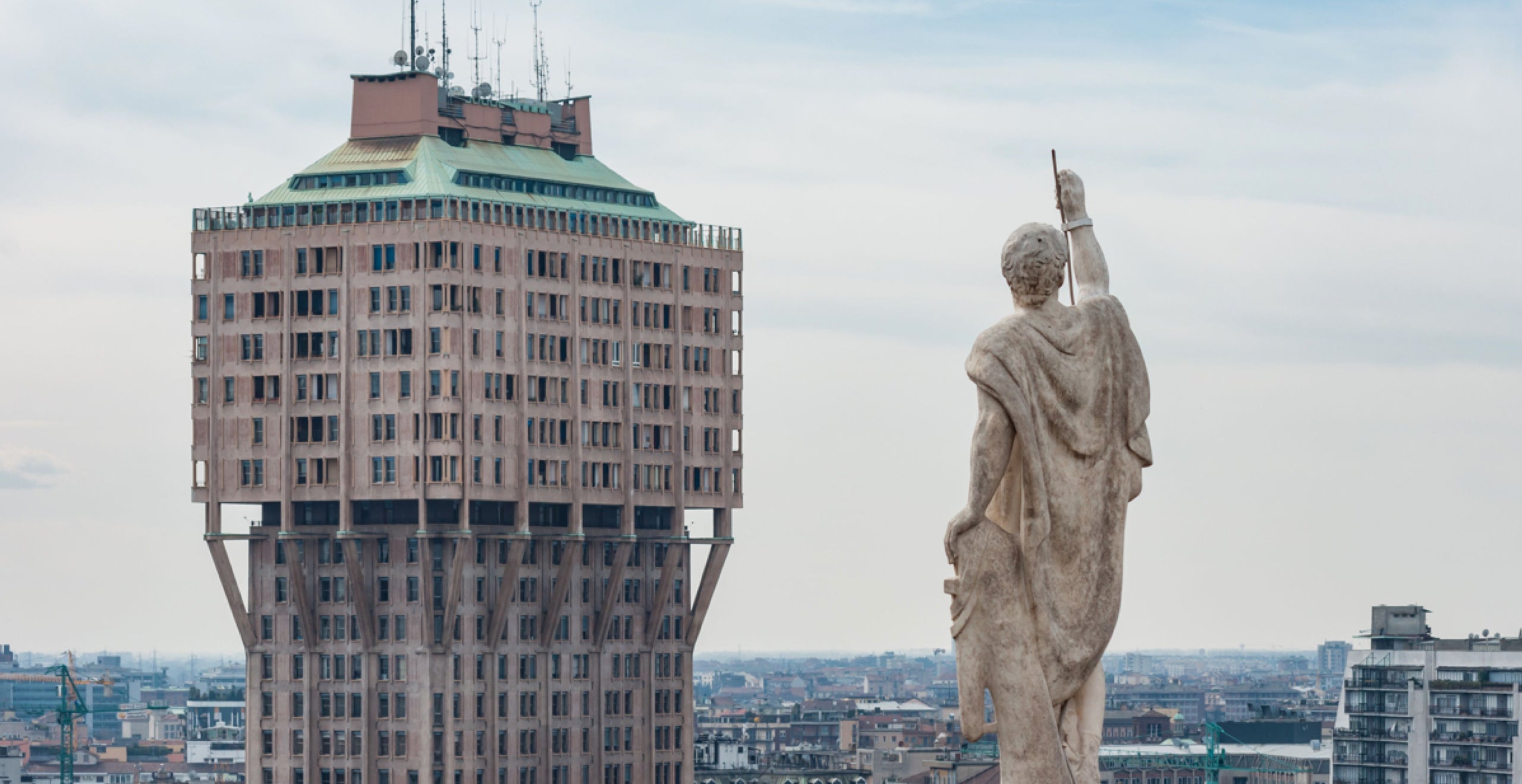
6
San Carlo al Lazzaretto (and an aperitivo)
Constructed from 1558 to 1592, San Carlo al Lazzaretto is an unusual, octagonal church from Renaissance times, and definitely worth a visit, but interior designer Eric Egan encourages you to check out what’s around it as well. “In Milan, the culture of aperitivo is a big culture. I would want to go out to a different area of town for an aperitivo every day,” he says. Near San Carlo al Lazzaretto, there’s a bar called Memà Cafè, which offers sidewalk seating and Sicilian snacks. The buildings right next to each other are a “confluence of history and modern life, cheek by jowl.” Egan sees the aperitivo culture as an expression of Milan’s thriving success as a cosmopolitan center, beginning in the ’90s after a long sleepy period. He also loves the area around Bar Radetzky near Largo Claudio Treves, on the edge of the Brera neighborhood. He likes to spend afternoons there, witnessing Milanese from all walks of life, and all ages, spilling across the piazza. “It’s great people watching,” he says.

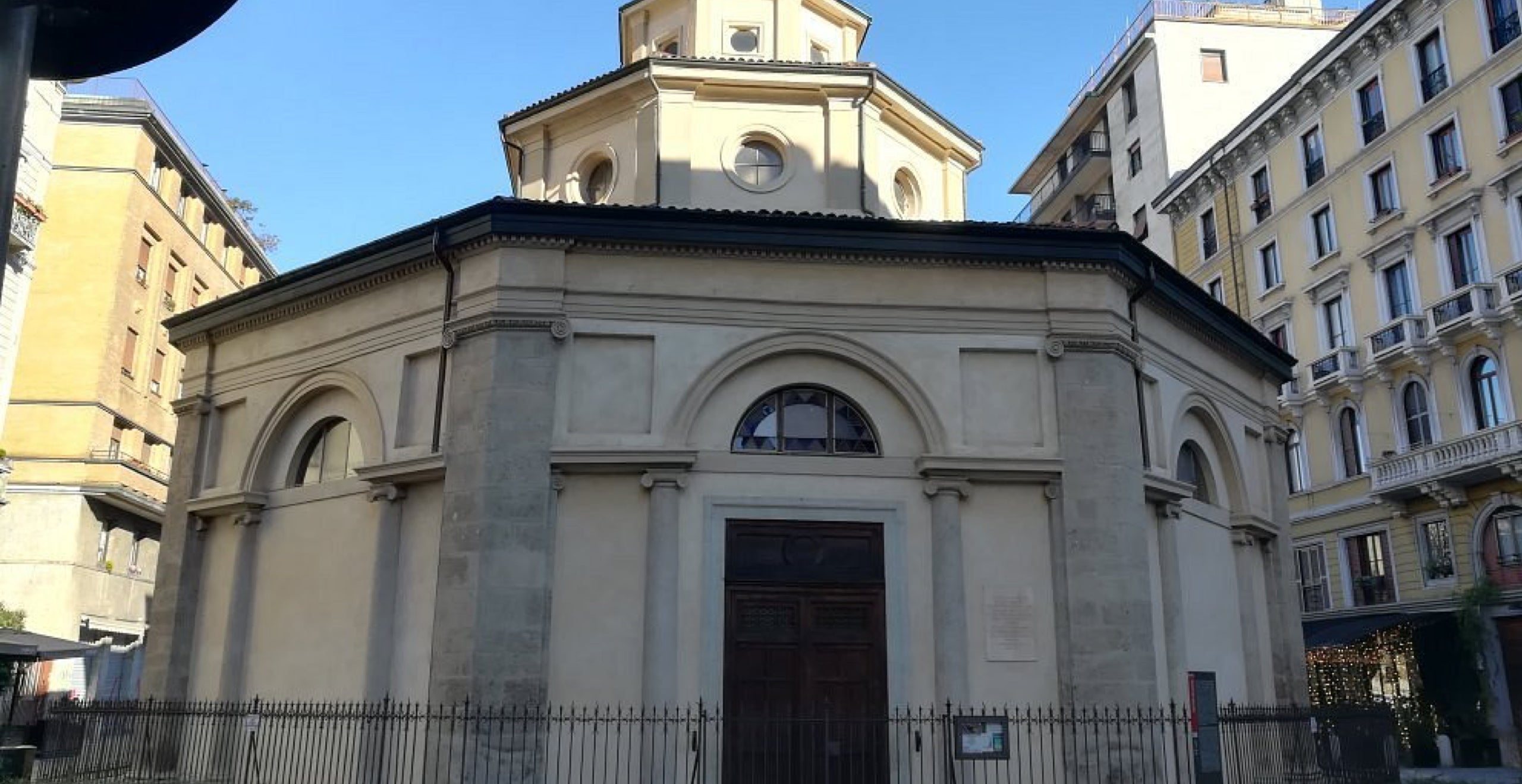

7
Planetario di Milano
Found in the Gardens of Porta Venezia, the planetarium is another building by Piero Portaluppi of Villa Necchi fame. “It’s really quite marvelous and the details are as extraordinary as Villa Necchi. When you visit, you can discover something new every time,” says Terrebonne. “The facade itself has all these details that relate to planets and astronomy. It has little stars that look almost cut out that, in a way, seem childlike and playful but are also extremely sophisticated,” she says. Terrebonne encourages visitors to appreciate the colors Portaluppi chose—the yellow panels and the beautiful cornflower color of the roof—in contrast to the travertine marble of the building. “On the side, there are these really sweet windows that band at the corner. There’s a little side door and the doors are all carved. All of these really inventive architectural ideas take place in a building where the facade seems very straightforward, classical, and Palladian.”
8
The Galleria
“I go to the Galleria every time I’m in Milan,” says Bruce Pask, the men’s fashion director for Bergdorf Goodman and Neiman Marcus. Opened in 1877, the Galleria consists of two arcades, covered by a glass and cast-iron roof, which connects the Piazza del Duomo to Piazza della Scala. “It’s a grandiose version of the covered shopping arcades in London, like the Burlington Arcade; they also have them in Paris in a smaller way,” says Pask. “But all the mosaic and tile work feel very specifically Italian.” Four stories high, containing vaulted, intersecting streets, the Galleria contains interesting shops and fantastic restaurants, like Cracco, but its design is what will draw you back again and again. “It gets beautiful light and it’s a very grandiose, spectacular space,” says Pask, noting it’s the details that really stand out. “In the center, there’s a mosaic of a bull, a torrino. The mythology is that if you put your heel of your shoe and spin around three times, it brings good luck. So, you can always see visitors doing that.”
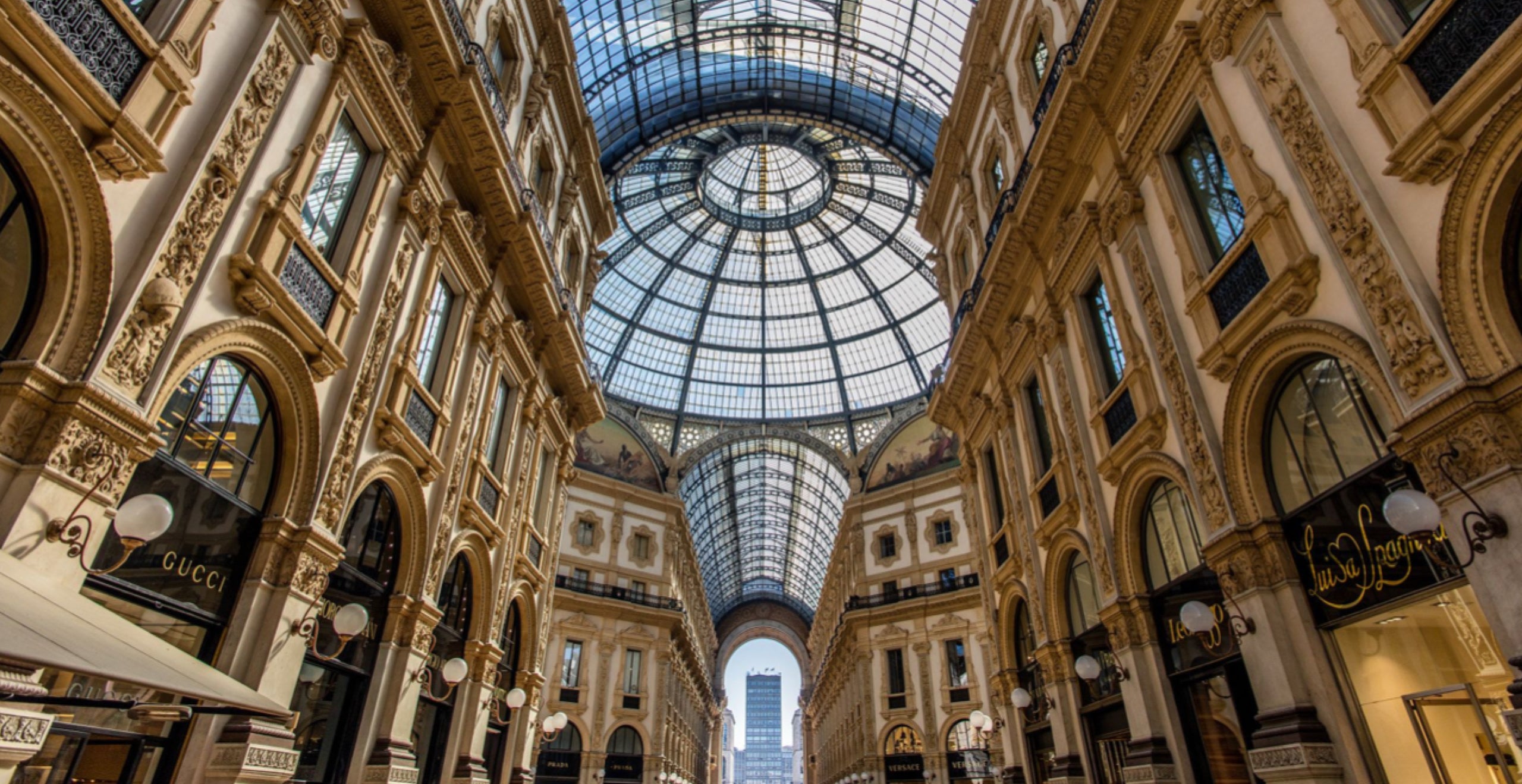
1
Villa Necchi

“The family behind Villa Necchi were the Singers of Italy,” says architect Brian Sawyer, referring to sisters Gigina and Nedda Necchi, as well as the former’s husband, Angelo Campiglio. The industrialists built the home between 1932 and 1935 and occupied it until it was given to the state in 2000 (it opened to the public as a museum in 2008). “It’s the apotheosis of Italian Moderne,” says Sawyer. “It’s probably one of the most interesting examples of a classic Italian villa but in a modern execution.” Film fans might recognize the clean lines, supple rosewood paneling, and endless marble bathrooms from Luca Guadagnino’s 2009 movie I Am Love. But for design heads, it’s about the achievement of architect Piero Portaluppi, whose rationalist vision resulted in its perfected execution. “It’s all based on traditional, classic proportion and scale,” says Sawyer. “But it takes materiality to a different place. You get whole terrazzo floors in the bathroom—amazing uses of marble for tubs.” The rationalist style emerged in the 1920s, under Mussolini, and was quite staid by definition. “But in the hands of the right person, it becomes exquisite,” says Sawyer. “It remains a capsule of the very best of Italian design from that period, all in one place: architecture, interiors, garden. It has it all.”
2
Ristorante Cracco

After being redesigned by Studio Peregalli in 2018, the landmark Michelin-starred restaurant from chef Carlo Cracco is the absolute height of food and design. Located in the Galleria (see below), Cracco is set up over five floors and is in fact many restaurants in one. “As you go up, it gets fancier,” says Jacqueline Terrebonne, editor-in-chief of Galerie magazine. “It goes from a cafe and wine bar to this fine-dining restaurant up at the top, where you’re overlooking the whole shopping center. And the food is almost as theatrical as the interiors they’ve created for it,” she says. Terrebonne is drawn to the restaurant’s stonework and mirrors but is transfixed by the procession of spaces as you move up the levels. “When you walk in on the top floor, there’s wood paneling and a teal blue color that’s been washed and faded, with these overblown flowers in blues and yellow and pinks. The dining rooms are really gold and mirrored, opulent in a way that’s very Milanese and elegant. It feels like it’s from another time and place,” Terrebonne adds.
3
Museo Bagatti Valsecchi

One way to think of the Museo Bagatti Valsecchi is a Milanese Grey Gardens but with way more history, money, and taste. The traditional home of the Valsecchi family, in the 1880s, brothers Baron Fausto Valsecchi and Baron Giuseppe Bagatti Valsecchi began to fill it with treasures that evoked Italy’s most romantic period. “Basically, at the end of the 19th century, they started making things that looked like they were from the 16th century. And that’s the feeling in there,” says Tom Delavan, the design and interiors director of T: The New York Times Style Magazine. Walking through the museum, you feel like the 15th century paintings are part of a room; the incredibly ornate cassones were there for storage; the four-post beds were slept in. “There’s suits of armor. If you’re into woodworking, the ceiling details and the beds are amazing,” says William Hanley, the editor-in-chief of Dwell. “There’s a basin for a shower that has these carved lizards in it; some of the most decorative elements of art I’ve ever seen,” he says. The best part: it doesn’t feel like a museum. “It’s like walking through someone’s home. You can see that someone really lived there,” says Delavan.
4
Altai

Just north of the city center, in the neighborhood of Porta Garibaldi, you’ll find a cacophony of shoppers, sidewalk cafes, and walking streets like Corso Como (the neighborhood gets its name from the Garibaldi Gate, a quintessentially neoclassical arch). At Via Pinamonte 6, lucky shoppers will come across Altai, a rug shop that is unmatched in both selection and taste. Owned by Raffaele Carrieri and his wife Elisa, the store caters to the most revered tastemakers in Italy: Nino Cerruti, Alberto Aspesi, and the Agnelli family. While you can always find the most unusual and beautiful berbers, felts, kilim, and Saharan mats, Raffaele and Elisa don’t just collect and sell rugs, they work with experts—museum-level historians and anthropologists—to craft exhibits of the rugs they uncover along the world’s oldest trade routes. “Honestly, you see things there that you’ve never seen before,” says Delavan. “They have incredible suzanis and tülüs. And then during Salone, they put on an incredible exhibition. They will tackle a certain kind of rug and find the best examples—they’re museum-quality rugs, and they’ll cover the shop with them.” Think of it as a museum where you have the option of taking home the exhibits—or you can always just browse, which can be just as fun and inspiring.
5
The Torre Velasca

“The Torre Velasca is the alternative d’Uomo. Maybe that’s a bit pretentious. It’s nice,” says Marco Velardi, the publisher and co-founder of Apartamento magazine. The brutalist Velasca Tower was completed in 1958, flexing its mushroom shape as an interpretation of a traditional, medieval, Lombardian castle or fortress. It was the brainchild of a group of Milanese architects called BBPR, who attempted to bridge the past and future with their own take on the most classic of large-scale architectural endeavors. When it was unveiled, the reaction was, in a word, brutal (it was attacked as a withdrawal from modern architecture), and to this day it is often derided. “People are fans. They love to hate it,” says Velardi. Emerging from the downtown core, in direct opposition to the d’Uomo, the mixed-use structure (commercial, residential) is, in a way, giving the finger to all the traditional beautifully domed buildings for which Milan is celebrated. “It pops out. It’s beautiful for its strangeness in the context of Milan,” says Velardi. “The general feeling is that it is of a Milan that is brutal instead of pretty.” In 2011, the Torre Velasca was given protection as a historic building.
6
San Carlo al Lazzaretto (and an aperitivo)

Constructed from 1558 to 1592, San Carlo al Lazzaretto is an unusual, octagonal church from Renaissance times, and definitely worth a visit, but interior designer Eric Egan encourages you to check out what’s around it as well. “In Milan, the culture of aperitivo is a big culture. I would want to go out to a different area of town for an aperitivo every day,” he says. Near San Carlo al Lazzaretto, there’s a bar called Memà Cafè, which offers sidewalk seating and Sicilian snacks. The buildings right next to each other are a “confluence of history and modern life, cheek by jowl.” Egan sees the aperitivo culture as an expression of Milan’s thriving success as a cosmopolitan center, beginning in the ’90s after a long sleepy period. He also loves the area around Bar Radetzky near Largo Claudio Treves, on the edge of the Brera neighborhood. He likes to spend afternoons there, witnessing Milanese from all walks of life, and all ages, spilling across the piazza. “It’s great people watching,” he says.

7
Planetario di Milano

Found in the Gardens of Porta Venezia, the planetarium is another building by Piero Portaluppi of Villa Necchi fame. “It’s really quite marvelous and the details are as extraordinary as Villa Necchi. When you visit, you can discover something new every time,” says Terrebonne. “The facade itself has all these details that relate to planets and astronomy. It has little stars that look almost cut out that, in a way, seem childlike and playful but are also extremely sophisticated,” she says. Terrebonne encourages visitors to appreciate the colors Portaluppi chose—the yellow panels and the beautiful cornflower color of the roof—in contrast to the travertine marble of the building. “On the side, there are these really sweet windows that band at the corner. There’s a little side door and the doors are all carved. All of these really inventive architectural ideas take place in a building where the facade seems very straightforward, classical, and Palladian.”
8
The Galleria

“I go to the Galleria every time I’m in Milan,” says Bruce Pask, the men’s fashion director for Bergdorf Goodman and Neiman Marcus. Opened in 1877, the Galleria consists of two arcades, covered by a glass and cast-iron roof, which connects the Piazza del Duomo to Piazza della Scala. “It’s a grandiose version of the covered shopping arcades in London, like the Burlington Arcade; they also have them in Paris in a smaller way,” says Pask. “But all the mosaic and tile work feel very specifically Italian.” Four stories high, containing vaulted, intersecting streets, the Galleria contains interesting shops and fantastic restaurants, like Cracco, but its design is what will draw you back again and again. “It gets beautiful light and it’s a very grandiose, spectacular space,” says Pask, noting it’s the details that really stand out. “In the center, there’s a mosaic of a bull, a torrino. The mythology is that if you put your heel of your shoe and spin around three times, it brings good luck. So, you can always see visitors doing that.”
- Courtesy of Getty Images
- Courtesy of Wiki Commons






